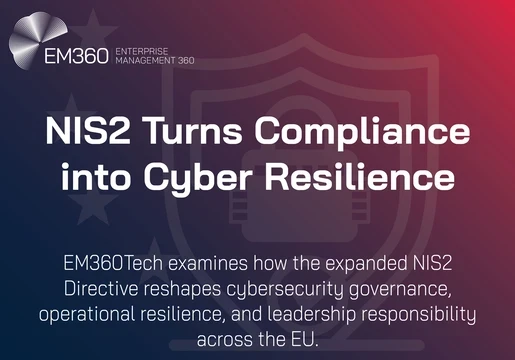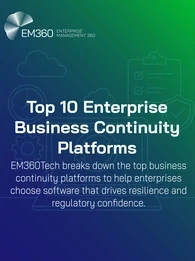
Remote working might be down since the pandemic, but hybrid working is still growing strong. Research shows that employees want alignment on flexible working, with 31% of talent leaving a role which they felt didn’t provide enough flexibility.
As flexible working establishes itself as the new norm, organisations need to ensure they have a solid network to keep business communications as efficient as possible, even through remote working.
In a world defined by remote and hybrid working, cloud communication solutions are proving crucial to maintaining this network and bringing teams together, no matter where they're located.
What Are Cloud Communication Solutions?
Cloud communication solutions are web-based tools that manage a business's communication channels. This includes things like phone systems, video conferencing, messaging, and more.
Think of it as outsourcing your entire phone system, video conferencing, messaging, and more to a secure online environment. This "cloud" eliminates the need for on-premise hardware and software installations, providing your team with the flexibility they need to stay connected at all times
Employees can access their communication systems from any device with an internet connection, fostering seamless collaboration for remote teams and geographically dispersed workforces. Whether working from home, travelling the globe, or on-site, communication remains uninterrupted, ensuring business continuity and enhanced productivity.
Cloud communication solutions also eliminate the substantial costs associated with purchasing, installing, and maintaining on-premise hardware and software. Cloud-based systems require minimal IT involvement for maintenance and updates. This leads to significant financial savings for businesses and frees up valuable internal resources to focus on core business activities.
Features of Cloud Communication Solutions
Modern cloud communication platforms go beyond basic telephony, offering a wide range of features that streamline remote collaboration across your organization.
Some of the most common features include:
- Unified Communications (UC): This is the core concept behind many cloud communication solutions. UC integrates various communication channels like voice calling, video conferencing, instant messaging, and file sharing into a single platform. This allows users to seamlessly switch between communication methods depending on the situation.
- Voice over IP (VoIP): VoIP replaces traditional phone lines by making calls over the internet. This often translates to significant cost savings on phone bills, especially for long-distance calls.
- Video Conferencing: Host face-to-face meetings with colleagues, clients, or partners located anywhere in the world. This is particularly beneficial for remote teams or geographically dispersed workforces.
- Instant Messaging (IM): Enable real-time communication among team members through chat functionalities. This allows for quick updates, brainstorming sessions, and troubleshooting in a dynamic and collaborative environment.
- File Sharing: Effortlessly share documents, presentations, or other files with colleagues. Cloud storage ensures accessibility from any device with an internet connection, eliminating the need for emailing large files or relying on physical storage devices.
- CRM Integration: Connect your cloud communication system with your Customer Relationship Management (CRM) software. This allows for streamlined customer interactions by integrating call logs, voicemails, and messaging history with customer profiles. For example, a salesperson can see a customer's past communication history before placing a call.
- Call Management Features: These features can include auto-attendants for routing calls, voicemail transcription for easy message retrieval, call forwarding to ensure you never miss a call, and call recording for training or reference purposes.
Depending on the specific provider, cloud communication solutions may also offer additional features like screen sharing for remote collaboration, presence management to see if colleagues are online, and integrations with other business applications.
Benefits of Cloud Communication Platforms
Cloud communication solutions offer a multitude of benefits for businesses of all sizes, transforming the way they connect and collaborate. Here's a breakdown of some key benefits:
1. Enhanced flexibility and scalability
Unlike traditional, fixed-capacity systems, cloud communication solutions are adaptable. A growing business can effortlessly add features as needed, while smaller teams only pay for what they use. This flexibility ensures you're not locked into expensive, unused functionalities.
2. Accessibility on the go
Geographical limitations vanish with cloud communication. Employees can access their communication tools from any device with an internet connection, fostering seamless collaboration for remote or geographically dispersed teams. Imagine taking calls or joining video conferences from your laptop at the airport! This translates to improved business continuity and productivity.
3. Cost savings
Cloud communication ditches the hefty upfront costs associated with purchasing, installing, and maintaining on-premise hardware and software. No more significant investments in phone systems or server upkeep. Additionally, minimal IT involvement is required, freeing up internal resources for core business activities.
4. Collaboration boost
Modern cloud platforms go beyond basic communication, offering features that streamline teamwork. Built-in instant messaging allows for real-time interaction, file sharing facilitates effortless collaboration, and video conferencing enables face-to-face meetings, fostering stronger team dynamics and improved communication.
5. Security and reliability
Cloud providers invest heavily in reliable infrastructure to ensure your communication channels are always operational and minimize downtime. Security measures are also implemented to safeguard sensitive business data and communications. With cloud solutions, you can rest assured your communication infrastructure is in safe hands.
Best Cloud Communication Solutions
Choosing the best cloud communication solution for your business depends on your specific business needs and budget.
Still, there are a number of solutions that stand out as leaders in the market, providing your teams with everything they need to communicate and collaborate effectively from anywhere in the world.
In this list, we’re counting ten of the best cloud communication solutions available today, exploring the features and benefits that make them so popular.
Vonage
An innovator in the world of CPaaS (Communication Platforms as a Service) and UCaaS, Vonage is a top contender in the cloud communications world. The platform specialises in Cloud PBX phone systems, virtual phone numbers, and international calling, making them a strong choice for businesses with geographically dispersed teams or global operations. For developers, Vonage offers powerful APIs (Application Programming Interfaces) that allow businesses to embed communication functionalities directly into their applications. This level of customization empowers businesses to create unique communication experiences.
The Vonage Business Communications environment enables conversations across the globe through SMS, voice, messaging, social media, video, and more. It combines all your communication channels – voice calls, video conferencing, instant messaging – into one central platform, simplifying communication and collaboration for your teams. Vonage offers desktop and mobile apps, allowing access from anywhere. Vonage also promises an exceptional 99.999% uptime and more than 50 business phone features to choose from.
Telnyx
Another creative communications company taking a programmatic approach to business growth, Telnyx helps companies build comprehensive communication systems with APIs. Widely regarded as one of the fastest-growing companies in the CPaaS space, the platform offers a robust suite of APIs that grant developers granular control over communication functionalities. Businesses can integrate voice, messaging, fax, and even Internet of Things (IoT) capabilities directly into their applications, creating unique and tailored communication experiences. It also boasts a private, high-speed IP network with Tier-1 connections, ensuring reliable and low-latency voice, messaging, and data services worldwide. This makes it ideal for businesses with a global presence or those anticipating international expansion.
Along with its APIs, Telnyx provides elastic SIP trunking, a scalable solution for managing voice calls over the internet. This allows businesses to dynamically adjust their call capacity based on real-time needs, optimizing costs and ensuring they're never caught short. And through Telnyx's Mission Control Portal, you gain comprehensive insights into their communication usage and detailed call routing data. This level of transparency empowers businesses to make informed decisions about their communication infrastructure.
Puzzel Solutions
Puzzel Solutions provides users with intelligent cloud-based customer engagement solutions tailored to modern businesses. A recognised leader in Contact Centre as a Service (CCaaS), Puzzel delivers scalable and empowering solutions to organisations, allowing users to better handle voice, email, chat, social media, and SMS interactions from one, intuitive platform. This creates a seamless omnichannel customer experience.
The platform combines AI and automation, including smart routing, virtual agents, and real-time analytics. This allows for fast response and resolution times, as well as personalised support. Puzzel is a completely scalable platform, built with flexibility for businesses in mind. This ensures full integration with the most popular CRM systems and other third-party applications, creating a seamless user experience, whether you’re working remotely or in a hybrid setting.
Twilio
If customization is your priority, Twilio is a great option. The cloud communication platform is not a one-size-fits-all platform, but rather a developer toolbox for building custom communication experiences. Unlike competitors offering pre-built communication features, Twilio empowers developers to integrate voice, messaging, video, and email functionalities directly into their applications using APIs. It doesn't limit you to a single communication channel either. Their platform supports voice calls, SMS, MMS, WhatsApp Business API, email, and even programmable video – all accessible through their APIs. This flexibility empowers developers to create communication experiences that leverage the most suitable channel for each situation.
Twilio's core strength lies in its robust APIs and Software Development Kits (SDKs). These tools grant developers the flexibility to build communication features that seamlessly integrate into existing applications. This allows businesses to create unique communication experiences tailored to their specific needs. Twilio is also constantly innovating and expanding its range of features to embrace new technologies with AI and machine learning. Their APIs integrate with cutting-edge technologies like Augmented Reality (AR) and the Internet of Things (IoT), allowing developers to build truly future-proof communication solutions.
NICE CXone
NICE CXone is a global technology leader which specialises in cloud-based customer experience solutions. It empowers organisations to deliver exceptional customer service across a large number of touchpoints, including voice, chat, and email. Users are able to track key performance indicators, boost customer satisfaction and loyalty, and streamline business operations. It offers a unified, open-cloud platform that allows you to orchestrate even the most complex customer experiences, seamlessly.
NICE has previously partnered with tech titans, including Amazon Web Services and ServiceNow, to further the adoption of AI-powered cloud-based customer service technologies. It’s the first platform to unify omnichannel routing, analytics, workforce optimisation, automation, and AI, giving businesses a head start in open cloud apps. By automating the interaction process, NICE improves agent productivity by removing any need for admin or “busywork”. The platform is best suited for enterprises looking to transform their customer service operations, with a focus on improving efficiency, scalability, and customer satisfaction.
RingCentral
A popular choice for enterprises, RingCentral is a leading provider of cloud-based communication solutions designed to empower businesses of all sizes to connect, collaborate, and manage interactions seamlessly. It goes beyond simple phone calls, combining core functionalities like voice calls, video conferencing, team messaging, and faxing into a single platform. You can also easily scale features and user licenses up or down as your business grows, ensuring you only pay for what you need. This flexibility makes it suitable for startups, small and medium businesses (SMBs), and even large enterprises.
What makes RingCentral a leader in the cloud communications market is its powerful and incredibly popular UCaaS platform. This unified platform allows for seamless communication and collaboration within teams, boosting productivity and streamlining workflows. RingCentral also leverages AI communication to enhance communication experiences. Features like call transcription, voicemail-to-text, and real-time meeting summaries powered by AI improve efficiency and streamline workflows. You also gain access to a global network with a presence in over 40 countries, and RingCentral offers scalable plans that can adapt to your company's growth.
Google Workspace
While not a communication platform itself, Google Workspace offers a suite of communication tools including Gmail, Google Meet, and Chat. The core strength of Workspace for communication lies in its tightly integrated suite of apps. Gmail serves as your business email solution, while Google Meet provides video conferencing capabilities, and Google Chat allows for instant messaging within teams. This creates a seamless communication flow, integrating tightly with other Google products like Gmail and Calendar, creating a unified experience for users. Workspace also integrates seamlessly with various third-party business tools, allowing you to streamline workflows and centralize communication within a familiar platform.
Google Workspace excels in promoting real-time collaboration on documents, spreadsheets, and presentations through Docs, Sheets, and Slides. Team members can work on the same document simultaneously, see edits instantly, and leave comments for clear communication and improved workflow. And since Workspace is entirely cloud-based, users can access their communication tools and documents from anywhere with an internet connection, using a web browser or mobile app. This flexibility fosters remote work and on-the-go collaboration. The ease of use, accessibility, and strong mobile functionality further solidify its position as a leader in the market, especially for businesses already invested in the Google ecosystem.
Microsoft Teams
Microsoft Teams is a cloud-based communication and collaboration platform offered by Microsoft, specifically designed for businesses that utilize the Microsoft 365 suite. It goes beyond simple communication, offering features that streamline teamwork and project management. Like Google Workspace, a major strength of Teams is its seamless integration with other Microsoft 365 applications like Word, Excel, PowerPoint, SharePoint, and OneDrive. This allows users to collaborate on documents, share files, and communicate within the same platform, boosting productivity and reducing context switching. Teams also facilitate communication through persistent chat channels dedicated to specific projects, departments, or topics, as well as private chats that allow for one-on-one or small group conversations.
Teams are best known for its high-quality video conferencing capabilities, enabling virtual meetings, presentations, and team huddles. It was one of the first video-conferencing platforms to bring features like screen sharing, breakout rooms, and live captions to further enhance the online meeting experience. Teams also integrate with other standout Microsoft platforms like OneDrive and SharePoint, allowing users to easily share and collaborate on files in real time. Team members can edit documents simultaneously, see edits instantly, and communicate within the file itself.
Zoom
Zoom really needs no introduction these days, having become almost synonymous with video conferencing during the rise of remote work. But it's important to understand that Zoom offers more than just video calls. While Zoom started with video, it has evolved into a UCaaS platform offering a broader range of communication tools. This includes team chat functionality through Zoom Team Chat, allowing for instant messaging within the platform. There’s also Zoom Phone, which integrates seamlessly, providing a cloud-based phone system with features like call recording and voicemail.
Zoom built its reputation on its core functionality – high-definition video conferencing with crystal-clear audio and a user-friendly interface. Features like screen sharing, breakout rooms, and real-time captions make it a versatile platform for meetings, presentations, webinars, and even virtual classrooms. It’s also renowned for its user-friendly interface, making it easy for anyone to join or host a meeting, regardless of technical expertise. The platform is accessible from desktops, laptops, tablets, and smartphones, further enhancing its flexibility.
8x8
8x8 is a major player in the cloud communication solution space, offering a feature-rich platform designed to meet the needs of businesses of all sizes. 8x8 doesn’t focus on a single niche but provides a comprehensive suite of tools that enhance communication and collaboration. The company’s UCaaS solution integrates core functionalities like voice calls, video conferencing, instant messaging, and audio conferencing into a single platform. This streamlines communication and collaboration across teams, improving productivity and reducing the need to switch between disparate applications. 8x8 also integrates seamlessly with popular CRM software and other business intelligence (BI) tools. This allows businesses to centralize communication and customer interactions within a familiar environment, streamlining workflows and boosting efficiency.
8x8 understands that communication needs to evolve. Their platform scales to accommodate your business growth, allowing you to add or remove features and user licenses as needed. You only pay for what you use, making it a cost-effective solution for businesses of all sizes. 8x8 also leverages AI to provide valuable call analytics and reporting. These insights help businesses identify trends, optimize communication strategies, and ultimately improve call quality and communication across the board.














Comments ( 0 )